Are the levels of PM2.5 pollution outside the same as the levels of pollution I breathe in?
Did you know that the PM2.5 levels you've been reading aren't always the same as the ones you breathe? In fact, the amount of PM2.5 pollution each person inhales varies and is almost certainly not the same as the amount of PM2.5 pollution reported in the ambient air.
🤨 In this article, you will learn about:
- The PM2.5 pollution you breathe in can be greater than the PM2.5 pollution in the air, even up to 2x.
- Exposure to PM2.5 can vary by individual, depending on one's activity and how close one is to the source of air pollution.
- People who exercise may inhale more air pollution than people who do not exercise.
You've probably seen the air pollution concentration numbers for your neighborhood. Perhaps you notice that the PM2.5 concentration in your area is 56 μg/m3, with a red warning color indicating that the concentration is unhealthy. Or perhaps the air quality in your city is yellow, which means moderate.
These figures provide information about the air quality in your neighborhood, but not the amount of pollution you are 'really' breathing. Every human being's exposure to PM2.5 is not the same as their informed concentration, nor is it the same for every person.
As a friendly reminder, PM2.5 is particulate matter in air pollution with a diameter of 2.5 microns or less. Because these particles are so small and easily inhaled, they penetrate the human respiratory system's defenses and are then bound by human blood via air exchange at the alveolus. — You can read more about it here.
The PM2.5 pollution you breathe in can be greater than the PM2.5 pollution in the air
According to a National University of Singapore study, the ratio between personal exposure to PM2.5 and ambient outdoor PM2.5 levels varies greatly, ranging from 1.5 to 2.1. The highest ratio was found on day 4 during the study, at 2.1, with an average personal PM2.5 exposure of 586.2 μg/m3 per day and airborne PM2.5 levels of 280.8 μg/m3. This means that the personal PM2.5 exposure of the subjects in the study was 2.1x higher than the PM2.5 levels in the ambient air.
A similar study was also conducted in India from December 2013 to February 2015. The researchers compared PM2.5 concentrations in ambient air, specifically in 🏠homes, 🏫schools, and🏢offices, to individual PM2.5 concentrations inhaled. As a result, the average annual PM2.5 concentration at 🏠home was 122.78 μg/m3, while the average PM2.5 concentration inhaled by each person was 132.88 μg/m3. Similar results also occurred in schools and offices, where individual PM2.5 exposure was greater than ambient PM2.5 concentrations.
🧐 Why does this happen?
Exposure to PM2.5 may vary by individual
In general, personal PM2.5 exposure largely depends on the proximity of the air pollution source. The closer a person is to the air pollution source, the more PM2.5 concentrations are inhaled. In addition, the concentration of PM2.5 inhaled by each person also depends on their activity.
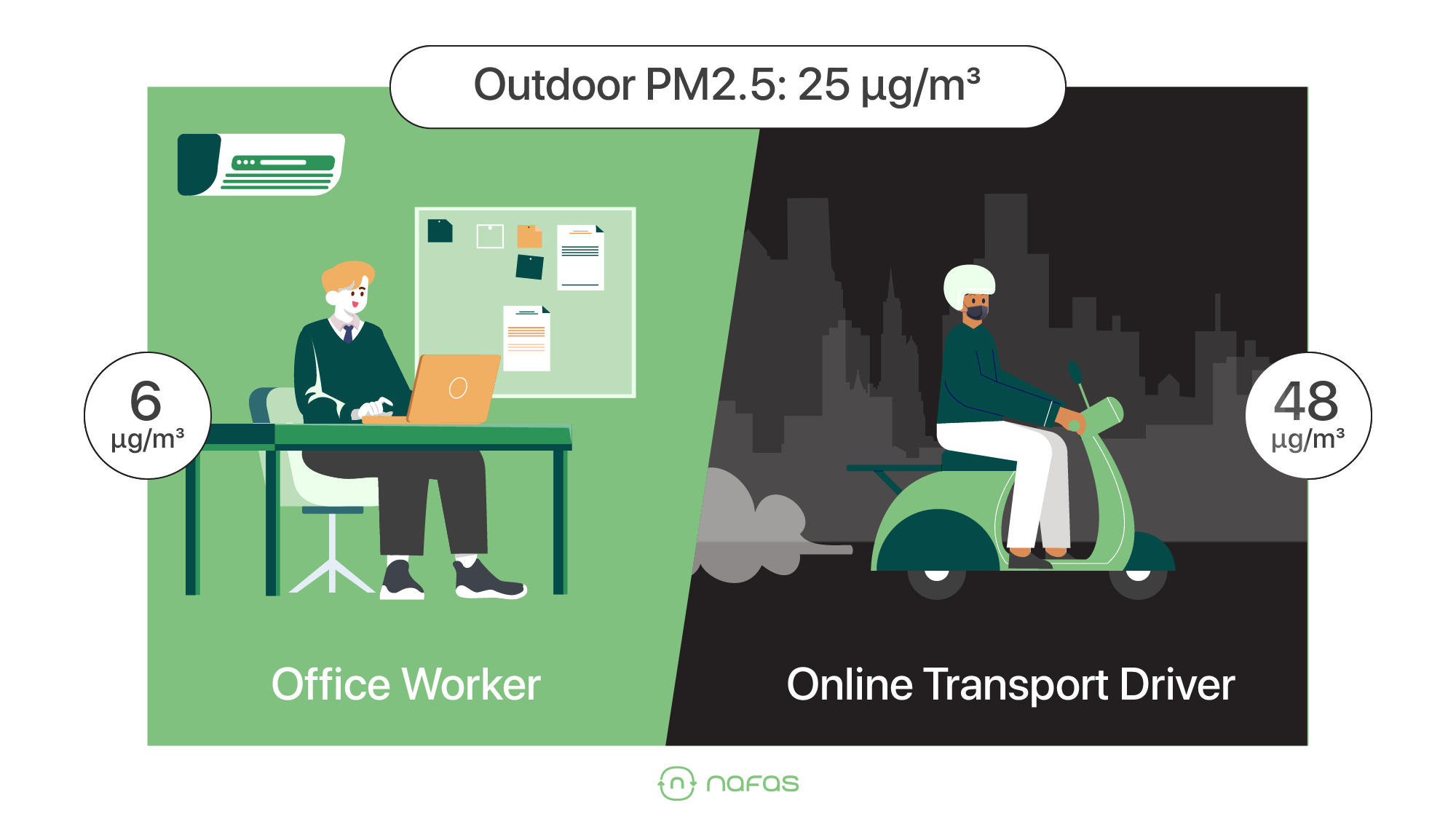
For instance, the air pollution inhaled by office workers who are indoors is certainly different from the air pollution inhaled by online transport drivers, even though they are both active in the same location. Take for example: If the average outdoor PM2.5 concentration is 25 μg/m3, an online motorcycle taxi driver may be exposed to twice that level due to his vicinity to the source of car emissions. But, not with the office worker.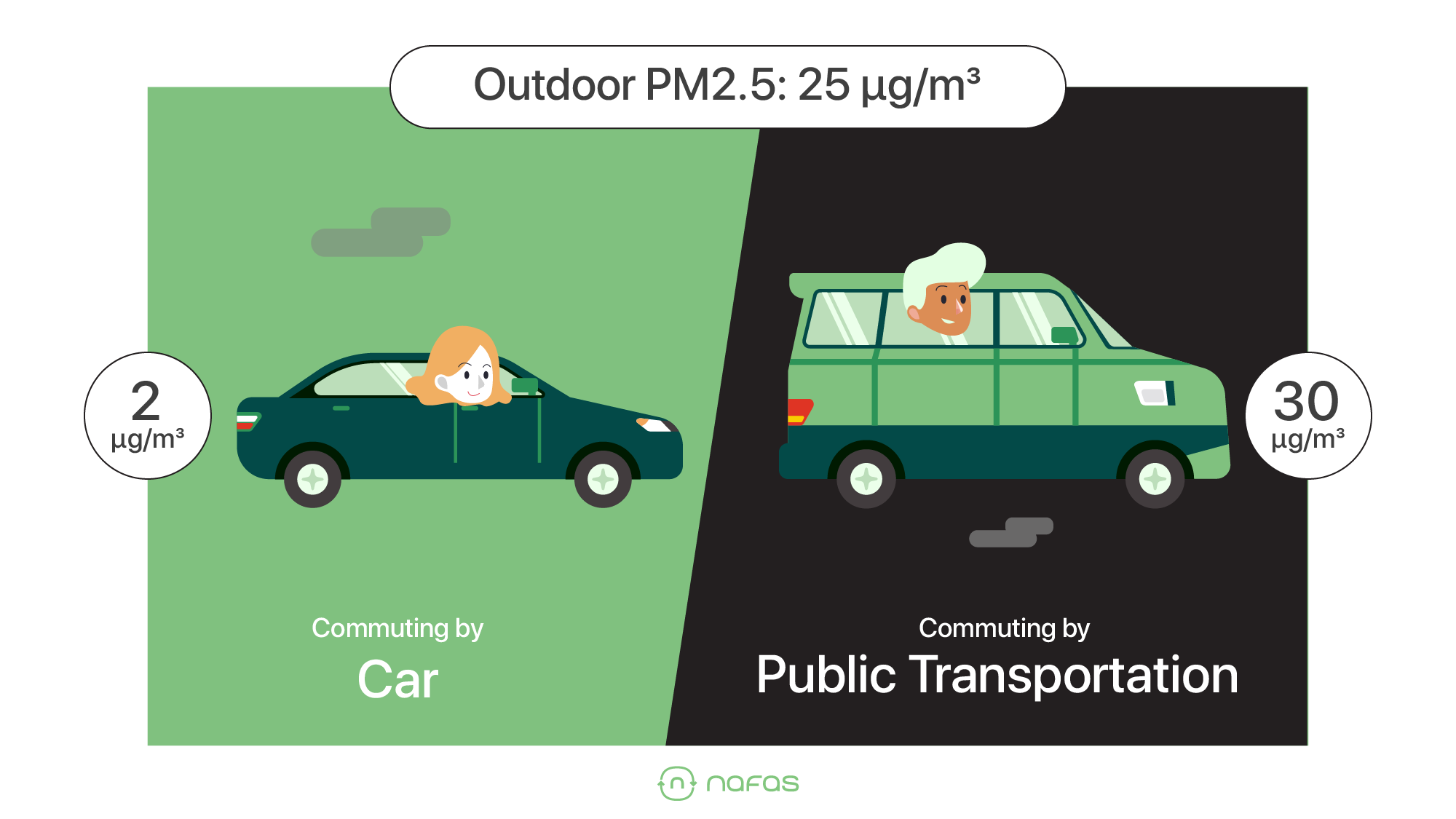
PM2.5 exposure will also be different for people traveling by local public transportation (angkot, for example) and people traveling by car, even though they are in the same city. Because private cars are air-conditioned, passengers will not be exposed to excessive PM2.5 levels.
Exercise = breathing more air pollution
Let’s take PM2.5 exposure in exercisers as one notable example. We breathe more intensely during exercise. You can see this breathing intensity on this exercise chart.

We breathe about 17,000 liters of air in 24 hours on average, about 15 breaths (12 liters) per minute. That's the size of 2 truck box engkel. When we exercise, our breathing rate can go up to 60 breaths (100 liters) per minute. So over 2 hours of intense exercise, we can breathe 12,000 liters. That's the size of a 1.5-truck box engkel.

Aside from that, we inhale more air through the mouth when exercising, bypassing the nasal filters that normally remove large particles. Higher airflow velocity causes pollutants to be carried deeper into the respiratory system.
👀 Now, let's take a look at the daily average air quality data in several cities that have been measured by the Nafas sensor!
p.s. If you still don't know the meaning of the colors that will be displayed, learn here.

In Jakarta, you can see that the air quality tends to be unhealthy for sensitive groups! Its average ambient air concentration in a month even reached 32 μg/m3.
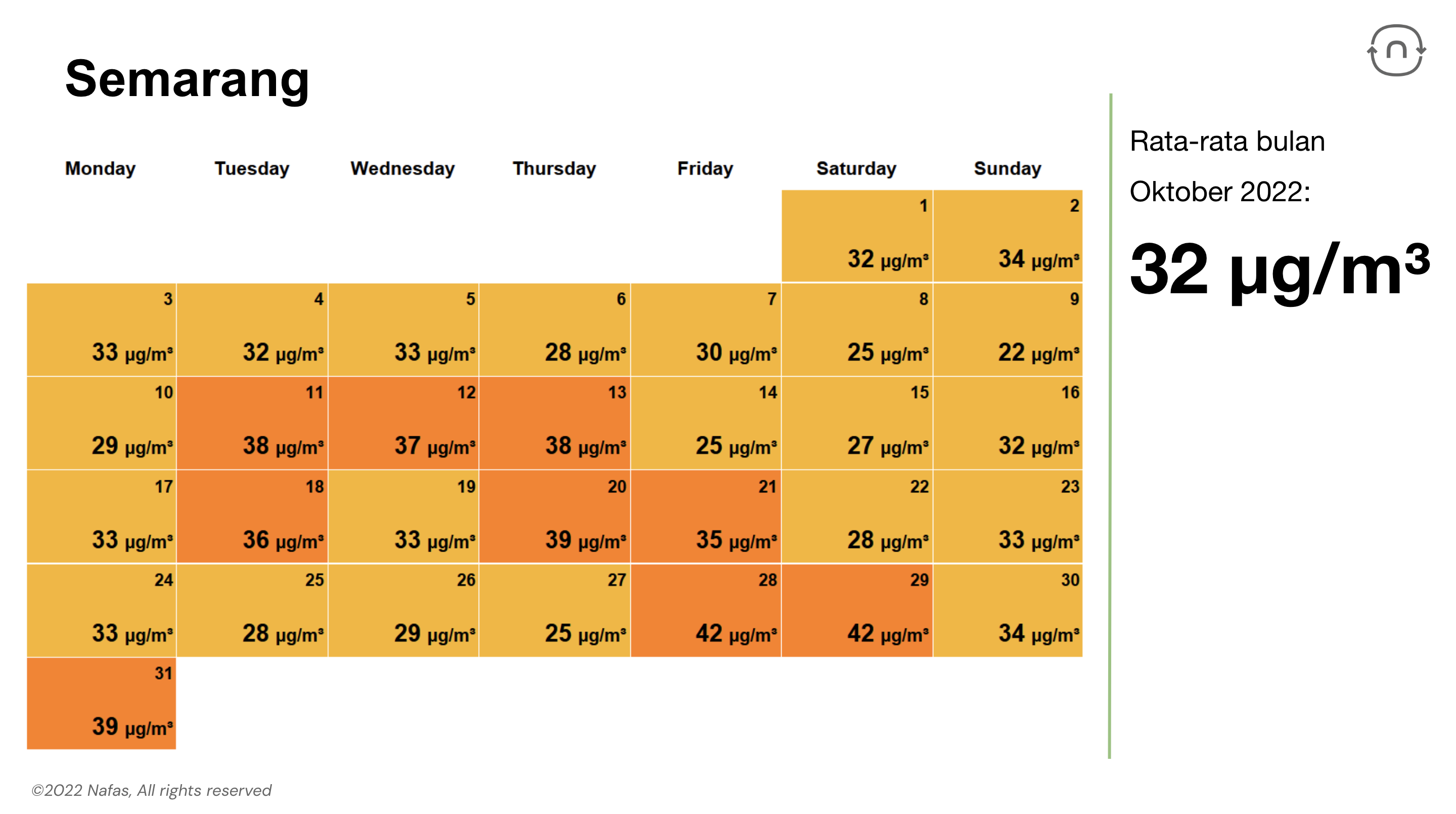
Similar to Jakarta, Semarang also had a monthly average concentration of 32 μg/m3 last October.
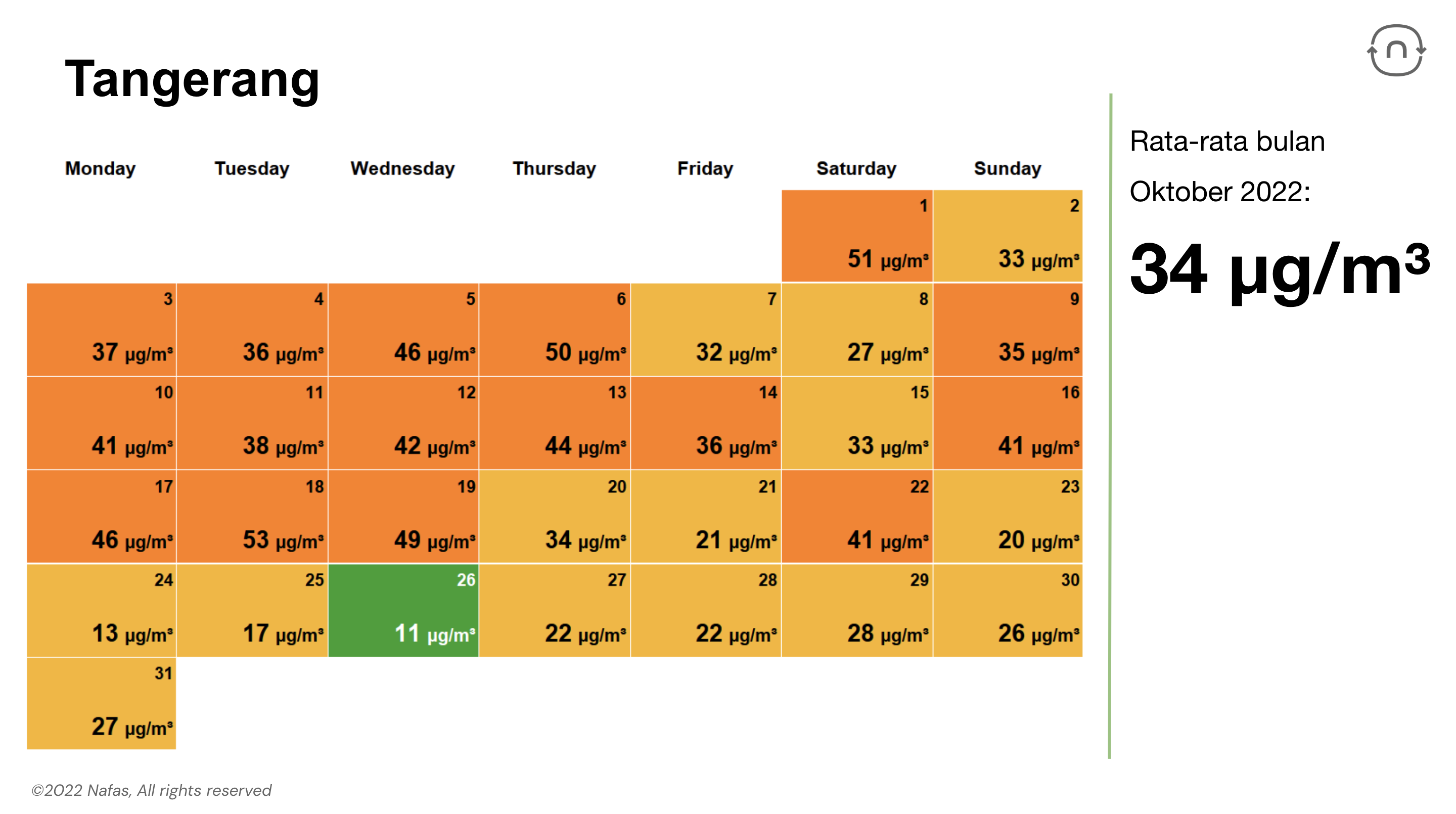
Worse than Jakarta and Semarang, air quality in Tangerang is also unsafe for sensitive groups, with ambient air concentrations reaching 34 μg/m3.
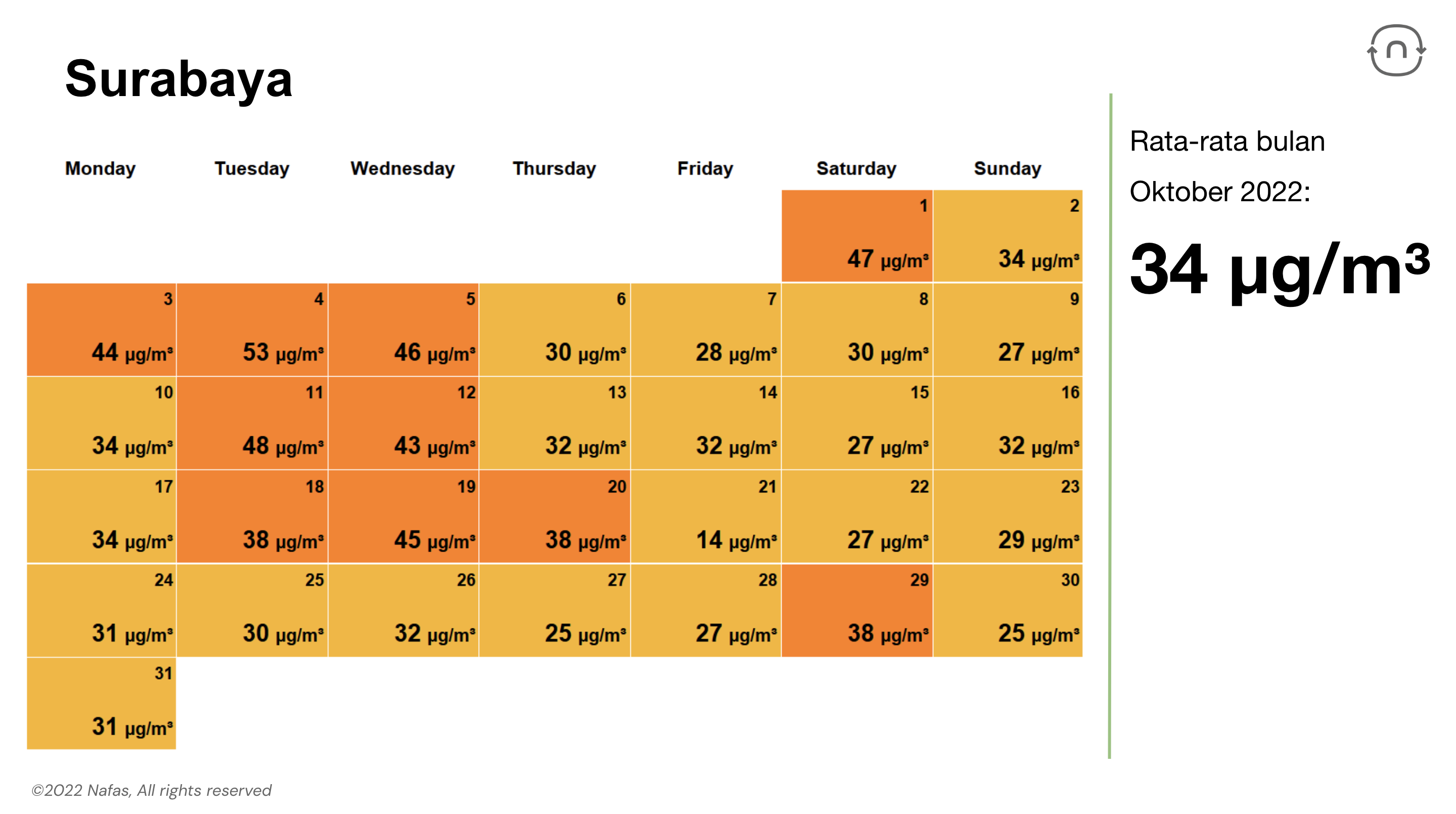
Surabaya also shows the same thing. You can't even find any green here, right?
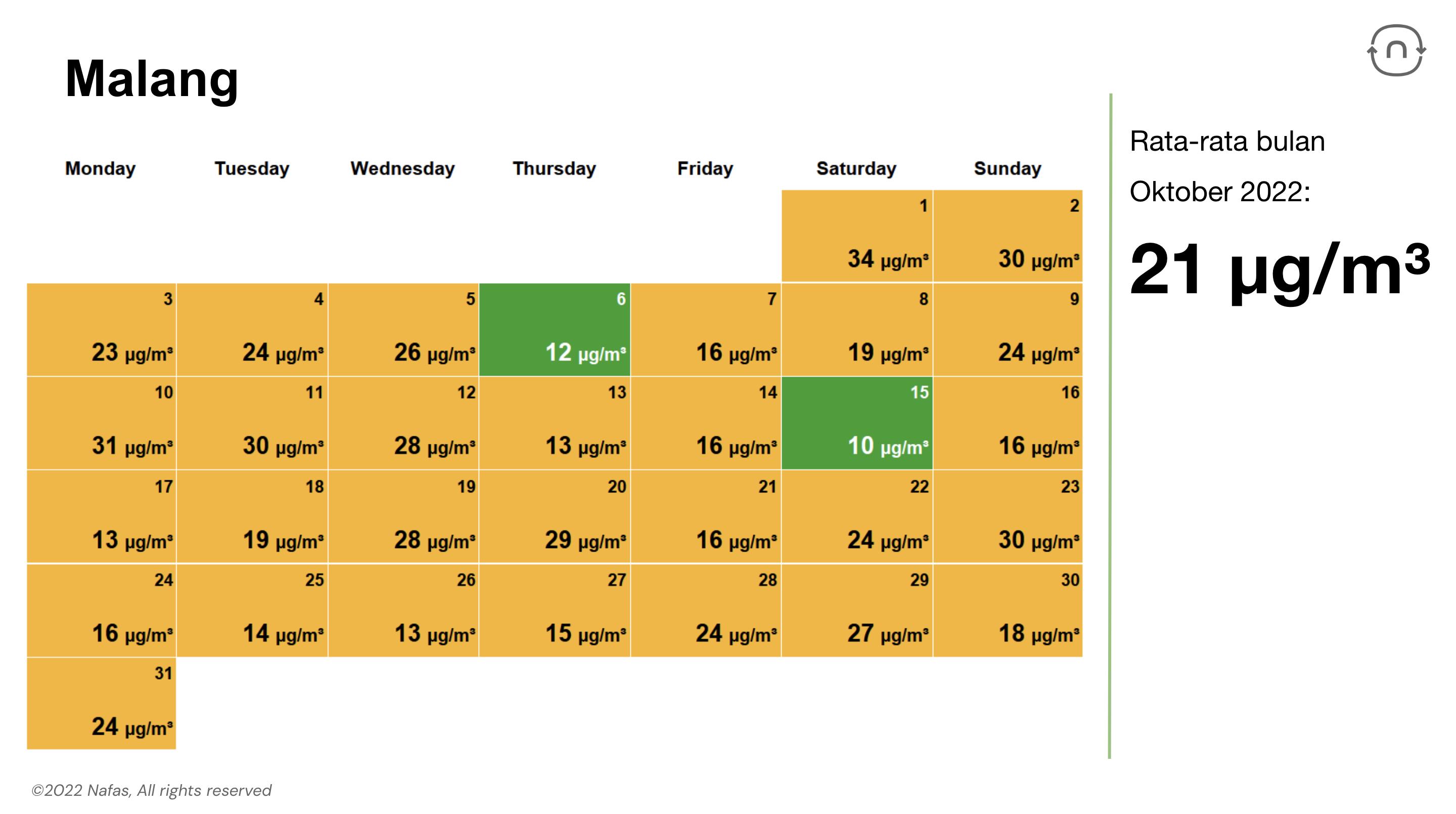
Last but not least, Malang showed moderate average air quality with a monthly average concentration of 21 μg/m3.
Finally, each person's PM2.5 exposure will differ depending on the activities they engage in. However, if people are outdoors a lot during bad air days, it is likely that the amount of air pollution each individual inhales will be much worse.
Can we reduce our exposure to air pollution?
Of course! While it is difficult to control the sources of air pollution, you can always start by limiting your own exposure to air pollution. You can follow these easy steps:
- 🌁 First, always check the air quality before going outdoors with Nafas app. You can follow the recommendations on the app. This is the most basic and important initial mitigation step to prevent you the presence of PM2.5 in the environment.
- 😷 Always wear a face mask outdoors, especially when air quality is unhealthy. Even if your city's air quality is good, we may be unaware that we are close to a source of PM2.5 pollution. Wearing a face mask during outdoor activities will reduce the risk of inhaling harmful content in air pollution.
- 🚴🏻♀️ Carefully choose when you will exercise and avoid times when the roads are hectic, such as during rush hour. Nafas continues to support you by adding an ‘Air Quality Alerts’ feature to our app. This feature will help you figure out the best times for you to exercise in healthy air quality.
- 🫁 Reduce activities near sources of air pollution, such as highway traffic, trash burning, and other combustion activities that create a lot of smoke. If you see your neighbors burning garbage, close your doors and windows immediately and wear a face mask.
- 👀 In the long term, follow air quality trends in your area. Joining in raising awareness among your community is also important as a lot of pollution is localized, including trash burning.
We already know that we cannot control outdoor air pollution (it is dependent on government actions and policies to be fixed), but we can control the choices we make for ourselves and our families. Keep in mind that your lungs and health are irreplaceable.
Want to live a healthy life from now on? Click here and start your journey with Nafas.